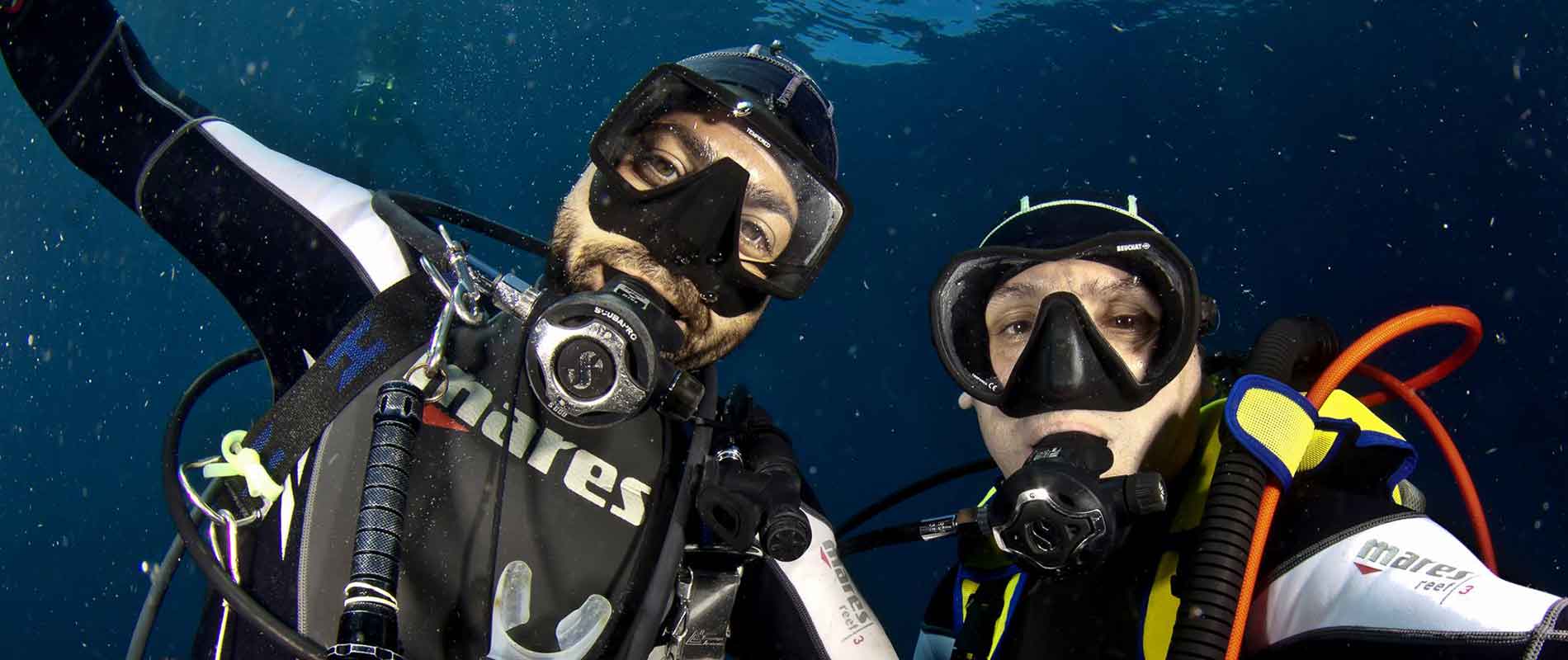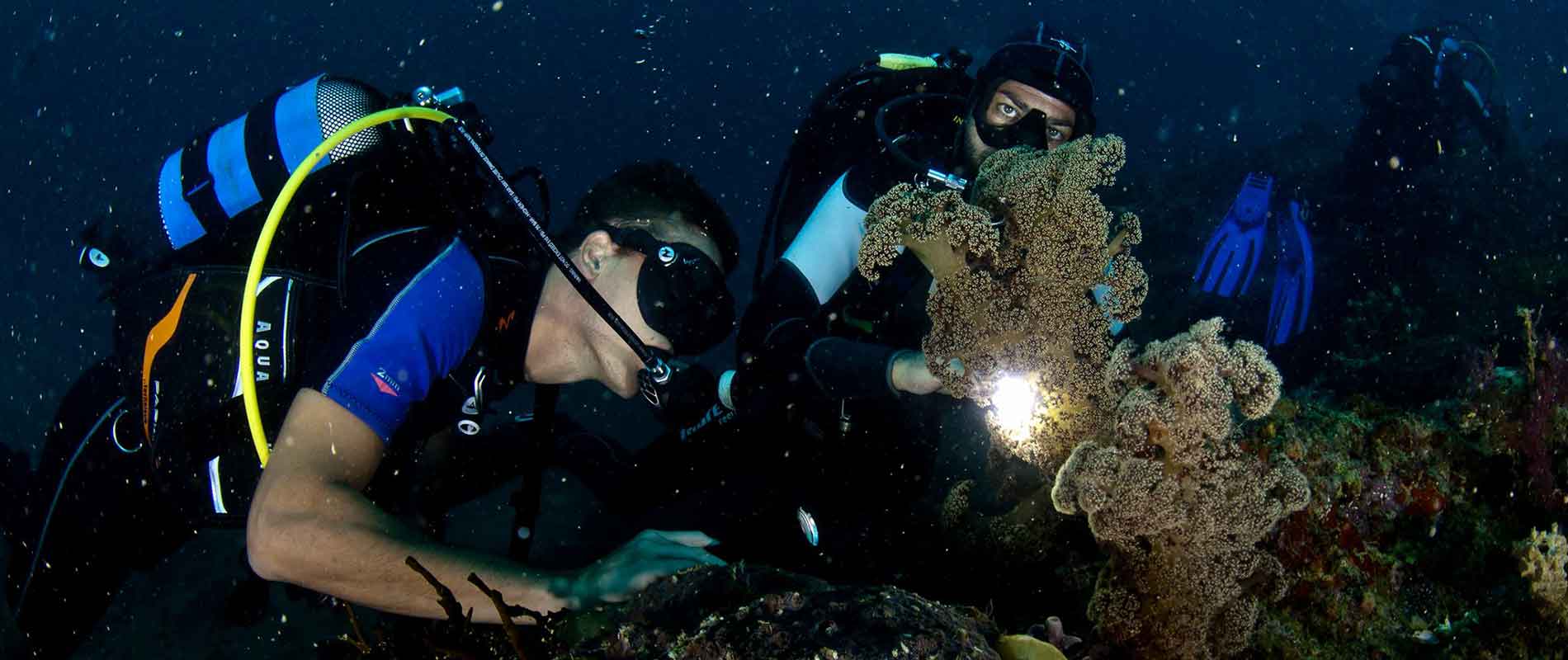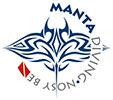

Regarding the mask there is only one piece of advice to give, use the most comfortable for your face and give you a good view.
If you are starting to take underwater photography or video photography, a black silicone mask will reduce the annoyance of the sun’s rays.
Although I personally find snorkeling very uncomfortable, it is very useful for snorkeling in the Nosy Tanikely Marine Park and essential for the whale shark season.
Now there are all kinds and materials on the market. Some are certainly more expensive but they will give you more freedom by being able to roll them up (Flex Snorkel) and always have it with you in your jacket pocket and ready when needed.
We do not recommend the full frame snorkeling masks (those of the Decathlon to understand us), they will not allow you to do a minimum of apnea because they do not give any possibility to compensate the ears, you will be limited to stay on the surface losing maybe a stale organism a few meters below you.

The waters of Nosy Be enjoy very pleasant temperatures throughout the year, ranging from 31°C to 25°C in the middle of winter.
You can dive with a 3mm wetsuit from April, the month in which diving activities resume, until mid-July, and with a 5mm wetsuit from mid-July to mid-October and then go back to 3mm until December 20, the end of the diving season upon special request.
Some divers dive with the shorty, certainly comfortable but leave exposed those parts of the body that are more at risk of abrasion, knees and arms.
In addition to a better protection of the body from the seabed, I recommend a long wetsuit because in some periods of the season the Indian Ocean is very rich in plankton and other organisms that could cause a slight itching or tingling.
The hood is in our opinion necessary in order to guarantee a lesser dispersion of heat, while some gloves could be useful in a few occasions, we personally do not use them, the less you have them, the less you affect the ecosystem.
A light under wetsuit could be useful for the coldest time, or to protect your shoulders during snorkeling.
For a more accurate choice of wetsuit, we invite you to check the pattern of the seasons created by averaging from 2012.

A very normal recreational BCD is fine for diving in Nosy Be. If you are used to using the technical ones we recommend you to travel with aluminum plate and counter plate to avoid unnecessary weight, and to mount a mono ring bag, the bibo ones are large and if you happen to find a hair of unfavorable current will increase friction.
An alternative to the technical BCD could be those of the latest generation with rear bag without plate, such as UFO or DIVE SYSTEM, some guests have made us try them, and for a holiday we admit that they are comfortable and light with the advantage of … minimal.

Most dives take place at an average depth of 25/30 m, the water is warm and you won’t need any sophisticated nozzles.
However, we recommend a regulator with a balanced first and second stage to reduce inspiratory effort, whether membrane or piston, and an octopus mount is more than enough.
In case your dispenser is not balanced, don’t bundle your head unnecessarily, even a basic school dispenser is ok and if you don’t have one, the Manta Diving is well equipped with dedicated diving equipment for rent.

Also for the fins the choice changes according to your comfort and/or habits, however even if in Nosy Be there are not very strong currents, dives are always or often drift, surely a fin that has a good blade and guarantees an effective thrust is recommended.
For these latitudes the Mares Avanti 4 or 3 are very good or anyway fins like this.
Very good also those of the Jet Fin type of various brands, I tried the Apeks Rk 3, they are very comfortable, I tried them against the current and went like a train.
Also the apnea fins are fine, the long blade guarantees a very good thrust, but if you are not used to use them they can cause cramps.
On the other hand, I absolutely do not recommend the Twin Jet of any brand, that’s why Ocean are not good, they will make you work hard and will not make you advance much.
Whether they are an adjustable belt or a small amount of shoe, the important thing is to have a good and effective shovel and that it is not too soft.

We recommended having at least one SMB for every diving couple.
The dives are carried out in maximum safety and supervision, but it can always happen to need it, maybe even just to maintain altitude during the deco.
The reel, or as some call it, the reel, does not need 1 km of line, 20/25 m are more than enough, and if I can do more than a reel I recommend a spool, much more practical and safe.

Many dives in Nosy Be are square, and unless you go to the wall you will do a lot of bottom time.
It is inevitable that during a week of repetitive dives, but remaining at non-binding odds, the computer will make us make mandatory stops.
There are various models and brands of dive computers on the market, but the ones that lend themselves most to the conformation of the seabed of Nosy Be are those computers that use an Algorithm of Bühlmanne ilVPM.
All those computers that use an RGBM Algorithm, are more restrictive and require a longer surface time, making them more suitable for different depths than those of Nosy Be.

Aladin 2G, Tec2G, Tec3G and the whole Uwatec – Scubapro series.
Very good are also the Dive System like Dive Deep and Dive Easy and the whole Ratio series as well as the more complex ones like Shearwter, OSTC Heinrichs Weikamp and other advanced dive computers.
These computers even give you the ability to change the algorithm in some cases, but what’s great are the security levels.
You can set them to level zero and make long dives with all the awareness of the case, but at the same time raising the safety level by just one point they begin to recall the RGBM conservatism and in some cases it is even exceeded and this maximum flexibility is the reason for our choice.

I Mares Nemo Wide, Excel, Wrist, Puck, M1, M2 etc.
Summary series Ds, Viper, Zoop, Fused, etc.. I Cressi Leonardo, Giotto and all the rest of the computers that are not listed above.
These computers are more conservative and because of the conformation of the seabed they tend to take you out of the curve (from the second day on) very quickly.
They are equal to the others for the first day, you will find obvious differences penalizing the diver.
However, by maintaining a correct reading of the instrument and the indicated off-gassing altitude you will be able to make dives of a correct duration.

Manta Diving’s cylinders are the classic “butts”, i.e. 12 lt short steel cylinders, most of them single DIN connection.
We are also equipped with 6 cylinders of 15 lt and for those who need a little more air, an 18 lt cylinder is available.
Six 7 lt aluminium stages, equipped with harnesses, are available for those who wish to make decompression dives with a NITROX stage.
If you have dispensers with INT connection don’t worry we have adapters.

We do not recommend to bring all those dangling attachments that will serve in most cases to entangle you in some coral. It could be useful instead a spring with the quick realise where you can hook your camera, maybe a shaker, to use in case of need and not to call all your dive buddies for every single fish we see, it would be like staying under a bell tower that never stops ringing.
The famous hook that is used in other parts of the world here is not extremely necessary, the currents, even if sometimes they are strong, allow us to stop in the wall without any particular effort.

The dives in Nosy be are full of ravines and we advise you to bring a torch with you, even a small one that doesn’t weigh much is fine.
You will need it together with chemical lights/ Starligth (the Manta is provided) for fascinating night dives.



